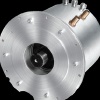Индустриален клъстер "Електромобили" - Учредители:








 |

|

|
| Актуално | За клъстера | Екип | Членове | Документи | Анализи | Услуги | Стани член | Награди | ССЕМ | Контакти |
ИКЕМ - Индустриален клъстер "Електромобили" | Четвъртък, 27.03.2025 | |
|
Battery Electric Vehicles
To reduce greenhouse gas emissions and improve security of energy supply the European
The problems alternative drive trains and fuels are facing right now are the high costs and the
The main problems electric vehicles are facing are the batteries, costs and charging facilities. |
Продукти 
Комплектна система за задвижване на електромобилиСистемата за електрозадвижване обхваща гама с три основни типоразмера на ел. мощност със съответните компоненти - електромотор и контролер. oще ...Виж всички продуктиАнкета с продължение...
|
|
|
 ЕВРОПЕЙСКИ СЪЮЗ Европейски фонд за регионално развитие Инвестираме във вашето бъдеще |
 |
 ОПЕРАТИВНА ПРОГРАМА „Развитие на конкурентоспособността на българската икономика” 2007-2013 www.opcompetitiveness.bg |
|
Интернет страницата е създадена с финансовата подкрепа на ЕФРР, в рамките на проект „Развитие на Индустриален Клъстер Електромобили” по ДБФП К-02-2/28.09.2011 г. |
|||